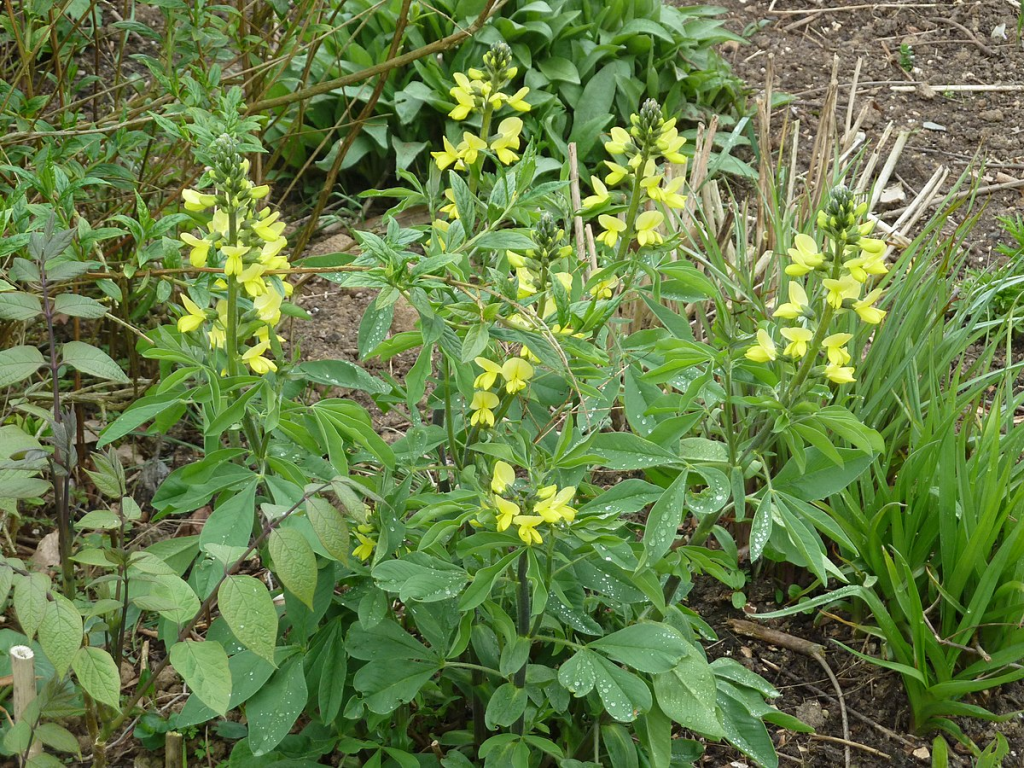
Native to the mountains of the Carolinas and Georgia, this clump-forming herbaceous perennial is known by many common names including Aaron’s rod, false lupine, blue ridge lupine, golden-banner, and bush pea. It is a member of the legume family, Fabaceae, that also includes pea, clover, and wild indigo. Plants grow 3-5′ tall from a sturdy taproot and have unbranched stems carrying blue- green trifoliate leaves with 3 oval leaflets up to 3″ long. In early summer dense terminal spikes of yellow pea-like flowers appear. The spikes are 8-10″ long and followed by seedpods covered with long shaggy hairs. The flowers are good in the vase and the plants are attractive in the back of the border and in wildflower, meadow, and cutting gardens. The genus name, Thermopsis, comes from the Greek words thermos, the Greek word for lupine, and opsis, meaning like, and refers to the resemblance of the flower to that of lupines. The specific epithet, villosa, is the Latin word meaning shaggy or hairy and refers to the appearance of the seedpods.
Type: Herbaceous poerennial
Bloom: Spikes of pea-like yellow flowers in early summer
Size: 3-5′ H x 2-3′ W
Light: Full sun
Soil: Average, dry to medium moist, well-drained; drought tolerant
Hardiness: Zones 4-9
Care: Cut back about 1 month after flowering
Pests and Diseases: None of significance
Propagation: Seed
Companion Plants: Artemisia ‘Powis Castle’, perennial flax, Salvia nemerosa ‘‘Caradonna’
Photo Credit: Wikimedia Commons